Analyze the basic syntax of Python in simple terms
Share 10 posts every day and fly together!
1. List fragmentation:

2. The magic of the list:
(1) Compare size:

(2) List addition:

(3) When lists are multiplied, they become compound assignments:

(4) The usage of in/not in in the list:

(5) The concept of "copy" of list fragmentation:
Sharded copy syntax: list name[:];
The essence of sharded copy: open up a new memory space;
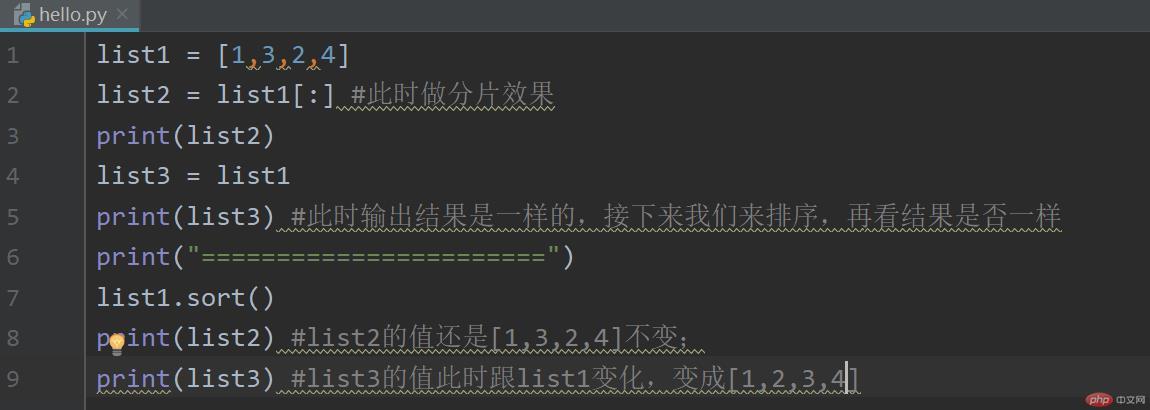
Note: The real copy requires the sharding method;
3. The difference between tuples and lists:
Answer: Tuples and lists are the largest The difference is that you can modify the elements in the list at will, and you can insert or delete an element at will, but this is not possible for tuples. Tuples are immutable (like strings), so you can’t expect to perform original operations on tuples. advanced operations such as sorting.
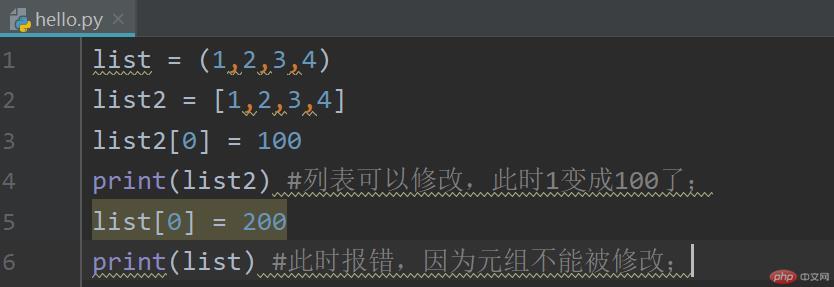
Note: Tuples can be defined without parentheses (list = 1,2,3,4)

4. Use string concatenation to update and delete:


5. Use join to separate String:

split() is exactly the opposite of join(). split() is used to split the string:

replace() method, as its name suggests, replaces the specified string:

6. String formatting:
(1) format () Function usage:

(2) Formatting operator: %

7, sequence:
(1) list(), tuple(), str(obj);

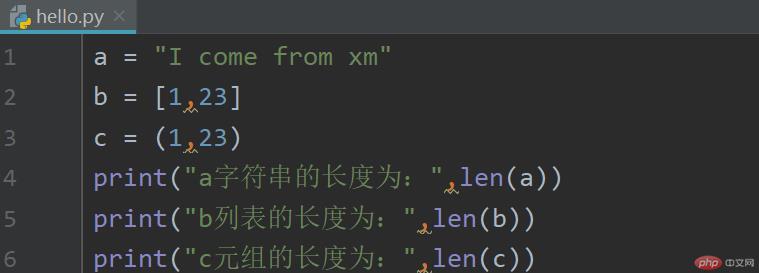

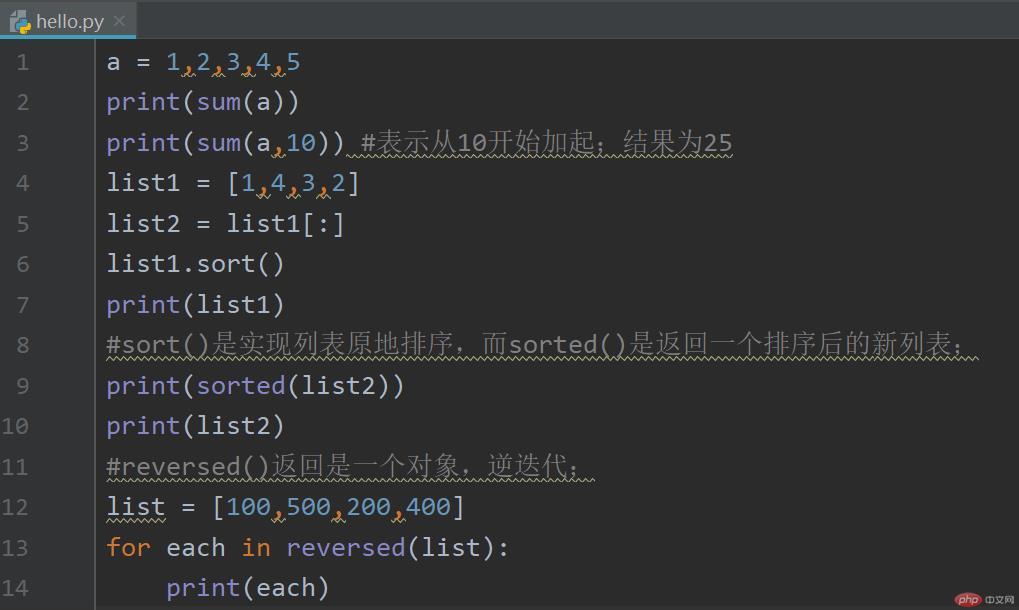
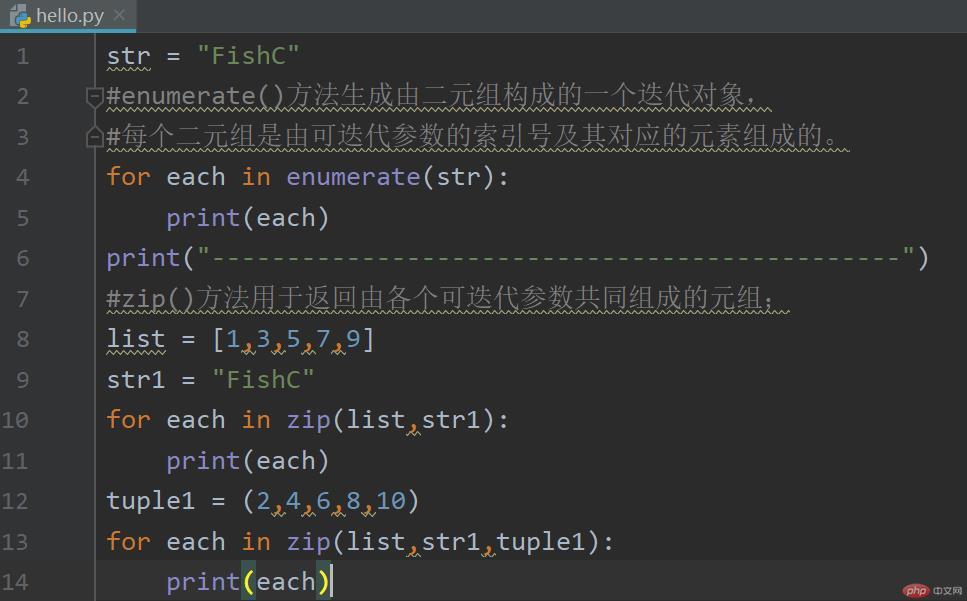

(2) Keyword parameters: 

This is very similar to PHP

This is very interesting, prepared for lazy people
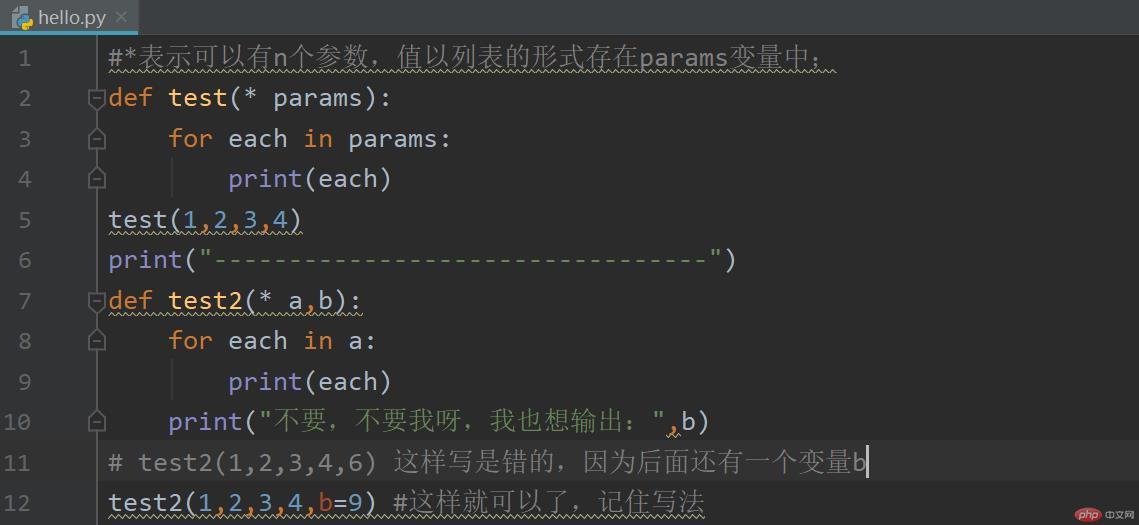
The asterisk * can actually be packaged and 'unpacked'. If you need to pass a list a into the collection parameter *params of the test parameter, then an error will occur when calling test(a). This You need to add an asterisk (*) in front of a to indicate that the actual parameters need to be "unpacked" before they can be used:

(5) Global variables:
 But it is not ruled out that some people still insist on the eight-character principle of "accept humbly and never change" and still feel it is necessary to modify this global variable in the function, then you might as well use global Keywords to achieve the goal!
But it is not ruled out that some people still insist on the eight-character principle of "accept humbly and never change" and still feel it is necessary to modify this global variable in the function, then you might as well use global Keywords to achieve the goal!
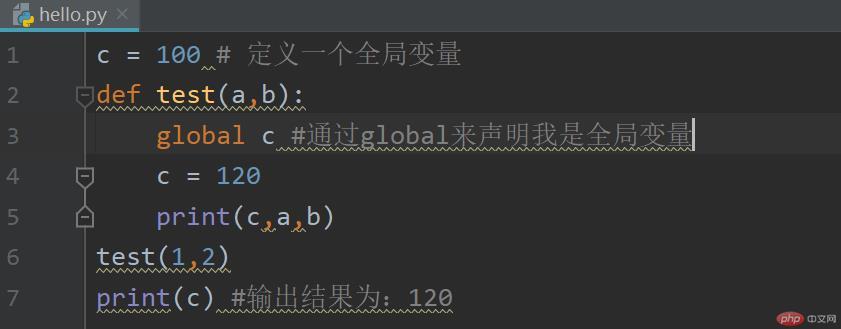
Note: Closures target internal functions, so they cannot be used directly externally. Adjust the internal function; 
(8) lambda expression: 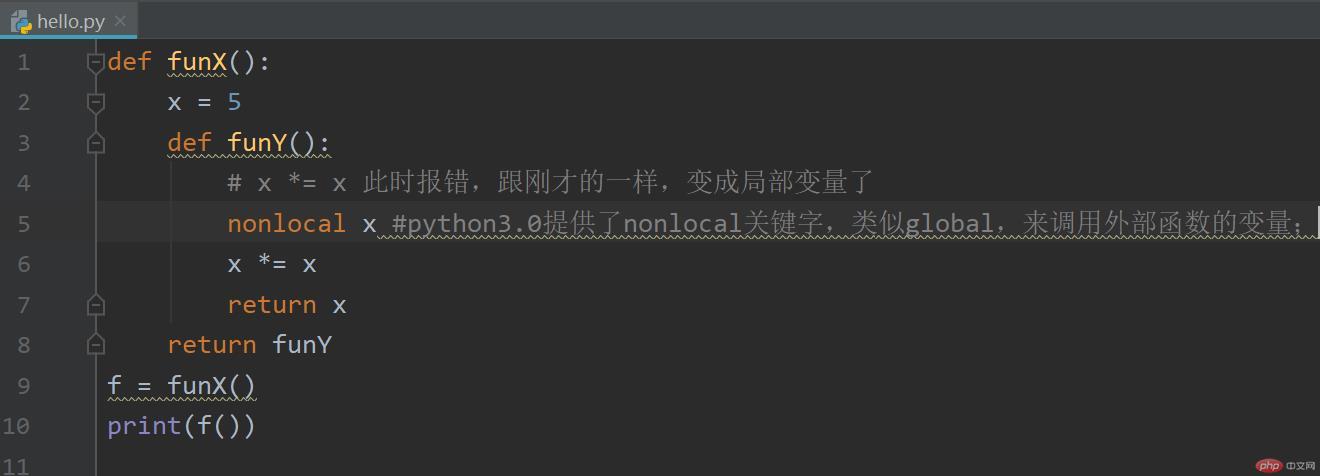 Also known as anonymous function
Also known as anonymous function
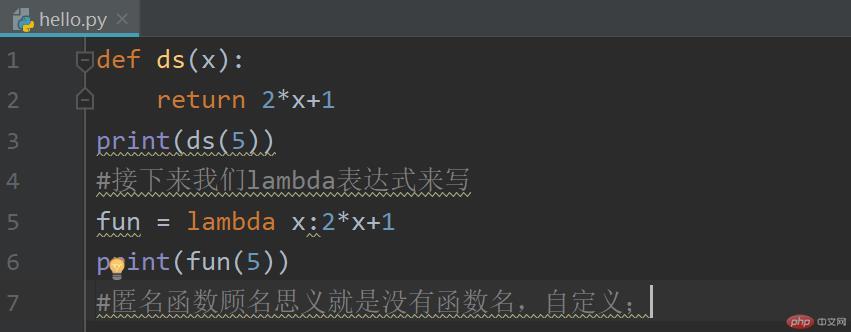 (9) filter( ) and map():
(9) filter( ) and map():
filter() has two parameters. The first parameter can be a function or None. If it is a function, the second iterable data will be used. Each element in is calculated as a parameter of the function, and the returned True value is filtered out; if the first parameter is None, the True value in the second parameter is directly filtered out. Come, let's take a look directly. Example:
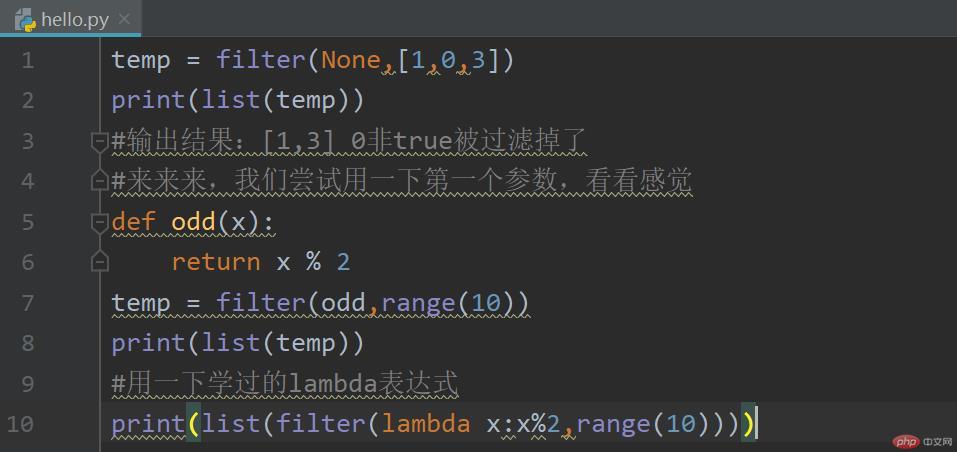
## (10) Recursion is "magical": 
The concept of recursion is the category of algorithms. It does not originally belong to the grammatical content of the Python language. However, recursion is discussed in every programming language teaching series. That is because if you master the methods and techniques of recursion, you will find that this It’s a great programming idea!
##Having said so much, I haven’t talked about the concept of recursion in programming! Recursion, in principle, is the function call itself. A behavior, let’s look at a factorial example:
9. Dictionaries and collections:
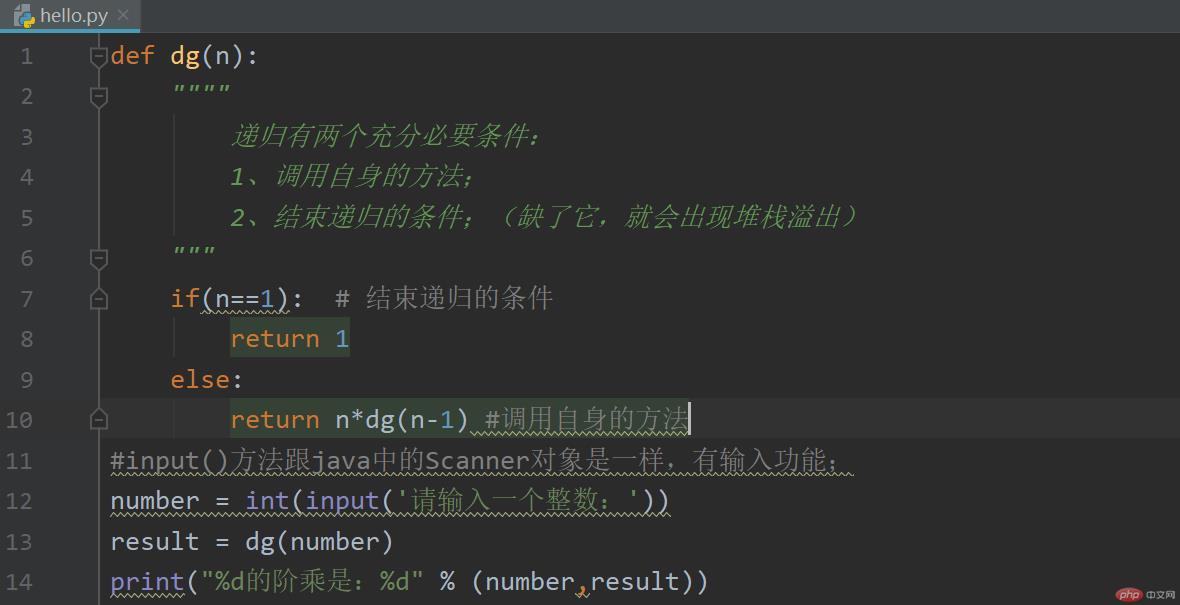 (1) Create and access dictionaries:
(1) Create and access dictionaries:
is created by {}: 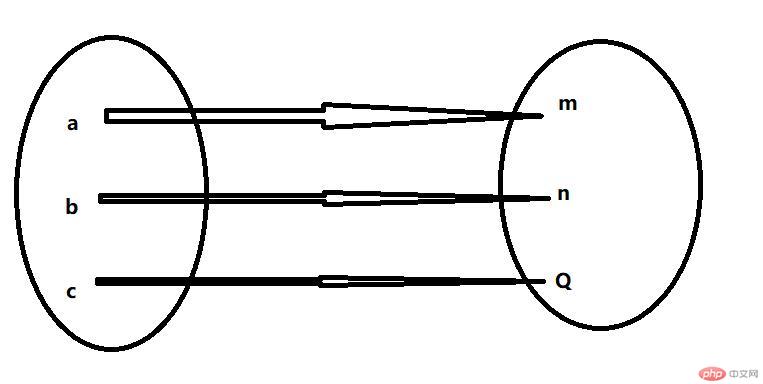
Create a dictionary through dict(): 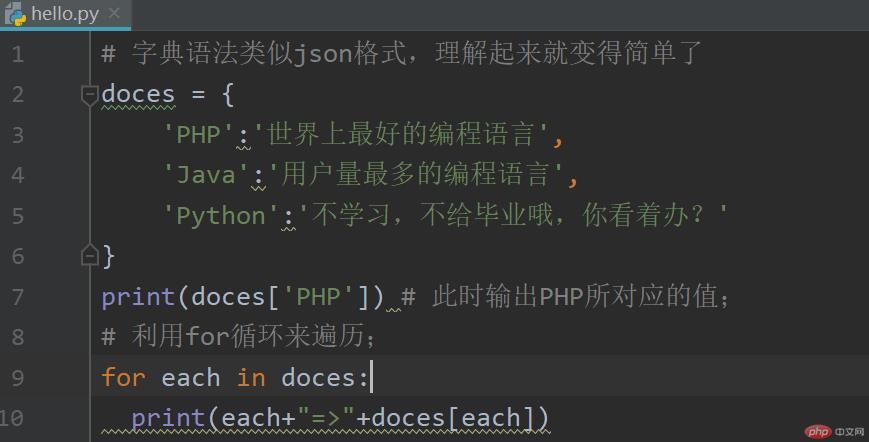
It is recommended to use {} to create a dictionary, which looks comfortable;
fromkeys()The method is used to create and return a new dictionary. It has two parameters: the first parameter is the key of the dictionary; the second parameter is optional and is passed in The value corresponding to the key. If not provided, the default is None. For example: -------------------------------------------------- -------------------------------------------------- ------------ key(), values() and items(): keys() is used to return the dictionary keys, values() is used to return all values in the dictionary, then items() of course returns all key-value pairs (i.e. items) in the dictionary, for example: ------------------------------------------------- -------------------------------------------------- ---------- get(), in and not in: The get() method provides a more relaxed way to access the dictionary item, when the key does not exist, the get() method does not report an error, but silently returns a None, indicating that nothing was found; if you want to return the specified value when the data cannot be found, you can use the second The default return value corresponding to the parameter setting; If you don’t know whether a key is in the dictionary, you can use the membership operator (in or not in) to judge; --------------------------------------- -------------------------------------------------- ------------------ clear() clears a specified dictionary: Some students may think that using Clear the dictionary by assigning the variable name to an empty dictionary. This has certain drawbacks. Let’s take a look at an example; --------- -------------------------------------------------- -------------------------------------------------- The copy() method is to copy the dictionary: -------------- -------------------------------------------------- ------------------------------------- pop() And the popitem() method: pop() pops up the corresponding value for a given key, and popitem() pops up an item. These two are easier: The setdefault() method is somewhat similar to the get() method, but setdefault() will automatically add it when it cannot find the corresponding key in the dictionary: update() method is used to update the dictionary: (In fact, there is a method above, but this one is more authentic) 10. Sets: In Python3, if you enclose a bunch of numbers in braces but do not reflect the mapping relationship, then Python will think that the bunch of things is a set. Since the elements in the set are unordered, they cannot be accessed using subscripts like sequences. But you can use iteration to read the data in the collection one by one: (add() and remove() methods) Sometimes you want the data in the collection to be stable, that is, like a tuple, elements in the collection cannot be added or deleted at will. Then we can define an immutable collection. The frozenset() function is used here. Yes, it freezes the elements: 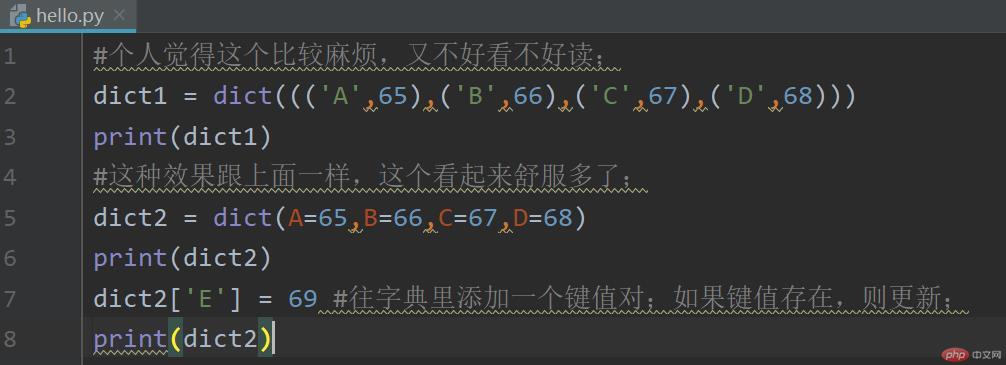 (2) Dictionary built-in method:
(2) Dictionary built-in method:  This example tells us that we cannot always take things for granted. Sometimes reality will give you a hard blow. The fromkeys() method does not The values "one", "two" and "three" will be assigned to keys 1, 2 and 3 respectively, because fromkeys() treats ("one", "two", "three") as one value.
This example tells us that we cannot always take things for granted. Sometimes reality will give you a hard blow. The fromkeys() method does not The values "one", "two" and "three" will be assigned to keys 1, 2 and 3 respectively, because fromkeys() treats ("one", "two", "three") as one value. 




 ------------------------------------------------ -------------------------------------------------- -----
------------------------------------------------ -------------------------------------------------- -----
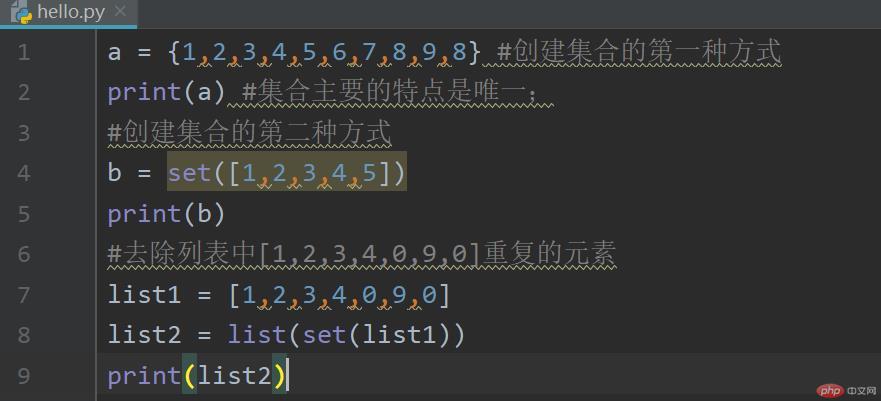


The above is the detailed content of Analyze the basic syntax of Python in simple terms. For more information, please follow other related articles on the PHP Chinese website!

Hot AI Tools

Undresser.AI Undress
AI-powered app for creating realistic nude photos

AI Clothes Remover
Online AI tool for removing clothes from photos.

Undress AI Tool
Undress images for free

Clothoff.io
AI clothes remover

AI Hentai Generator
Generate AI Hentai for free.

Hot Article

Hot Tools

Notepad++7.3.1
Easy-to-use and free code editor

SublimeText3 Chinese version
Chinese version, very easy to use

Zend Studio 13.0.1
Powerful PHP integrated development environment

Dreamweaver CS6
Visual web development tools

SublimeText3 Mac version
God-level code editing software (SublimeText3)

Hot Topics
 Is the conversion speed fast when converting XML to PDF on mobile phone?
Apr 02, 2025 pm 10:09 PM
Is the conversion speed fast when converting XML to PDF on mobile phone?
Apr 02, 2025 pm 10:09 PM
The speed of mobile XML to PDF depends on the following factors: the complexity of XML structure. Mobile hardware configuration conversion method (library, algorithm) code quality optimization methods (select efficient libraries, optimize algorithms, cache data, and utilize multi-threading). Overall, there is no absolute answer and it needs to be optimized according to the specific situation.
 Is there any mobile app that can convert XML into PDF?
Apr 02, 2025 pm 08:54 PM
Is there any mobile app that can convert XML into PDF?
Apr 02, 2025 pm 08:54 PM
An application that converts XML directly to PDF cannot be found because they are two fundamentally different formats. XML is used to store data, while PDF is used to display documents. To complete the transformation, you can use programming languages and libraries such as Python and ReportLab to parse XML data and generate PDF documents.
 How to convert XML files to PDF on your phone?
Apr 02, 2025 pm 10:12 PM
How to convert XML files to PDF on your phone?
Apr 02, 2025 pm 10:12 PM
It is impossible to complete XML to PDF conversion directly on your phone with a single application. It is necessary to use cloud services, which can be achieved through two steps: 1. Convert XML to PDF in the cloud, 2. Access or download the converted PDF file on the mobile phone.
 What is the function of C language sum?
Apr 03, 2025 pm 02:21 PM
What is the function of C language sum?
Apr 03, 2025 pm 02:21 PM
There is no built-in sum function in C language, so it needs to be written by yourself. Sum can be achieved by traversing the array and accumulating elements: Loop version: Sum is calculated using for loop and array length. Pointer version: Use pointers to point to array elements, and efficient summing is achieved through self-increment pointers. Dynamically allocate array version: Dynamically allocate arrays and manage memory yourself, ensuring that allocated memory is freed to prevent memory leaks.
 How to control the size of XML converted to images?
Apr 02, 2025 pm 07:24 PM
How to control the size of XML converted to images?
Apr 02, 2025 pm 07:24 PM
To generate images through XML, you need to use graph libraries (such as Pillow and JFreeChart) as bridges to generate images based on metadata (size, color) in XML. The key to controlling the size of the image is to adjust the values of the <width> and <height> tags in XML. However, in practical applications, the complexity of XML structure, the fineness of graph drawing, the speed of image generation and memory consumption, and the selection of image formats all have an impact on the generated image size. Therefore, it is necessary to have a deep understanding of XML structure, proficient in the graphics library, and consider factors such as optimization algorithms and image format selection.
 How to open xml format
Apr 02, 2025 pm 09:00 PM
How to open xml format
Apr 02, 2025 pm 09:00 PM
Use most text editors to open XML files; if you need a more intuitive tree display, you can use an XML editor, such as Oxygen XML Editor or XMLSpy; if you process XML data in a program, you need to use a programming language (such as Python) and XML libraries (such as xml.etree.ElementTree) to parse.
 How to convert xml into pictures
Apr 03, 2025 am 07:39 AM
How to convert xml into pictures
Apr 03, 2025 am 07:39 AM
XML can be converted to images by using an XSLT converter or image library. XSLT Converter: Use an XSLT processor and stylesheet to convert XML to images. Image Library: Use libraries such as PIL or ImageMagick to create images from XML data, such as drawing shapes and text.
 Recommended XML formatting tool
Apr 02, 2025 pm 09:03 PM
Recommended XML formatting tool
Apr 02, 2025 pm 09:03 PM
XML formatting tools can type code according to rules to improve readability and understanding. When selecting a tool, pay attention to customization capabilities, handling of special circumstances, performance and ease of use. Commonly used tool types include online tools, IDE plug-ins, and command-line tools.






